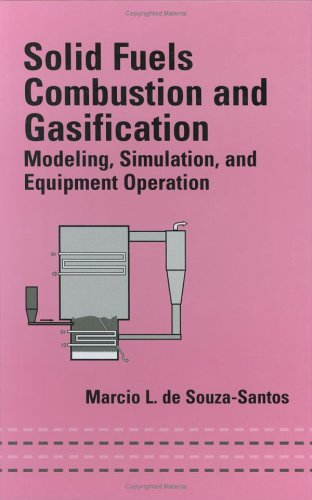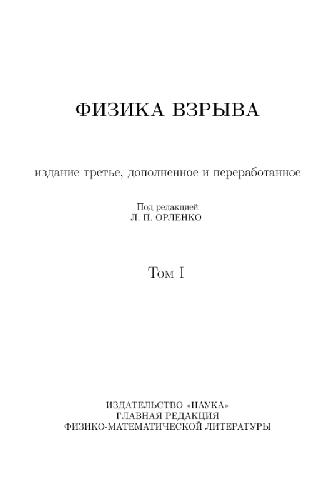Marcio L. de Souza-Santos0824709713, 9780824709716, 9780203027295
Supplies an abundance of examples, models, and exercises for step-by-step instruction on the modeling and simulation of combustion and gasification machinery
Of critical importance to the industrial and design engineer, Solid Fuels Combustion and Gasification…
– Clearly displays methods to build computer simulation programs that will effectively predict equipment performance
– Offers methods to formulate sound mathematical models for boilers, gasifiers, furnaces, and incinerators
– Shows how to interpret simulation results for the best design and operation of combustion and gasification equipment
– Describes key aspects of solid and gas combustion phenomena
– Provides detailed discussions of the basic and auxiliary equations used in specific projection models
– Includes applications of moving and fluidized beds
Marcio L. de Souza-Santos is Professor of Mechanical Engineering, State University at Campinas, São Paulo, Brazil. The author of numerous professional publications, he holds several patents and is a member of the American Chemical Society, the Brazilian Society of Chemical Engineering, and the advisory committees of several national and international meetings on energy. An experienced consultant, he has worked for respected organizations such as the Institute of Gas Technology, Chicago, Illinois. He received the B.Sc. (1973) and M.Sc. (1981) degrees in chemical engineering from the University of São Paulo, Brazil, and the Ph.D. (1987) in chemical engineering from the University of Sheffield, England.
Table of contents :
Solid Fuels Combustion and Gasification: Modeling, Simulation, and Equipment Operation……Page 9
Preface……Page 12
Acknowledgments……Page 16
Nomenclature……Page 17
Greek Letters……Page 21
Superscripts……Page 22
Subscripts……Page 23
Contents……Page 26
1.1 EXPERIMENT AND SIMULATION……Page 32
1.1.1 The Experimental Method……Page 33
1.1.2 The Theoretical Method……Page 39
1.2.1 Phenomenological versus Analogical Models……Page 41
1.2.2.1 0D-S Models……Page 43
1.2.2.3 2D-S Models……Page 45
1.2.2.4 3D-S Models……Page 46
1.2.3 Dynamic, or nD-D, Models……Page 47
EXERCISES……Page 48
2.1 INTRODUCTION……Page 49
2.2 PHYSICAL PROPERTIES……Page 50
2.3 CHEMICAL PROPERTIES……Page 52
2.4 THERMAL TREATMENT……Page 55
2.4.1 Drying……Page 56
2.4.2 Devolatilization……Page 59
2.4.2.2 Temperature and Heating Rates……Page 62
2.4.2.3 Pressure……Page 65
2.5 GASIFICATION AND COMBUSTION……Page 66
EXERCISES……Page 68
3.2 ELEMENTS OF GAS-SOLID SYSTEMS……Page 69
3.3 MOVING BED……Page 74
3.3.1 Applications of Moving Beds……Page 78
3.4 FLUIDIZED BED……Page 79
3.4.1 Applications of Fluidized Beds……Page 84
3.4.2 Comparisons between Fluidized-Bed and Moving-Bed Processes……Page 87
3.4.3 Atmospheric and Pressurized Fluidized-Bed Gasifiers……Page 89
3.4.4 Gas Cleaning……Page 93
3.5 SUSPENSION OR PNEUMATIC TRANSPORT……Page 94
3.5.1 Applications of Suspensions……Page 96
3.6 SOME ASPECTS RELATED TO FUELS……Page 98
4.1 INTRODUCTION……Page 100
4.2.1 Average Particle Diameter……Page 101
4.2.2 Minimum Fluidization Velocity……Page 105
4.2.3 Particle Terminal Velocity……Page 108
4.2.4 Air Ratio and Air Excess……Page 109
4.2.5 Densities for Solid Particles……Page 110
4.3 TIPS ON CALCULATIONS……Page 111
EXERCISES……Page 114
5.1 INTRODUCTION……Page 117
5.2.1 Mass Balance……Page 118
5.2.2 Energy Balance……Page 119
5.2.2.1 Isenthalpic……Page 120
5.2.3.1 Efficiencies Based on Enthalpy……Page 121
5.2.3.2 Special Efficiencies……Page 122
5.3.2 Chemical Reaction……Page 124
5.3.3.1 Computation of Equilibrium Coefficients……Page 126
5.3.4.1 Algebraic Approach……Page 127
5.3.4.2 Differential Approach……Page 129
5.4 USEFUL RELATIONS……Page 130
5.5 SUMMARY FOR 0D-S MODEL……Page 136
5.6 FLAME TEMPERATURE……Page 137
EXERCISES……Page 140
6.1 DEFINITIONS……Page 143
6.2 FUNDAMENTAL EQUATIONS……Page 144
6.2.1.1 A Classification for Boundary Conditions……Page 149
6.2.2 Some Comments on the Continuity Equations……Page 151
6.2.3 Simpler Level of Attack……Page 152
6.2.4 Solutions for Equations with Second Derivatives……Page 155
6.3 FINAL COMMENTS……Page 156
EXERCISES……Page 157
7.1 INTRODUCTION……Page 158
7.2.1 The Model Chart……Page 159
7.2.2 Summary of Model Assumptions……Page 163
7.2.3.1 Global Continuity……Page 165
7.2.3.2 Species Mass Continuity……Page 166
7.2.3.3 Continuity of Energy……Page 168
7.2.3.4 Momentum Continuity……Page 169
7.2.3.6 Further Simplifications……Page 170
EXERCISES……Page 175
8.1 HOMOGENEOUS/HETEROGENEOUS REACTIONS……Page 177
8.3 A SYSTEM OF CHEMICAL REACTIONS……Page 178
8.3.1 Nitrogen Oxides……Page 180
8.4 STOICHIOMETRY……Page 181
8.5 KINETICS……Page 183
8.5.1.3 Reaction Rates……Page 185
8.6 FINAL NOTES……Page 188
EXERCISES……Page 190
9.1 INTRODUCTION……Page 191
9.2.1 Unexposed-Core Model……Page 194
9.2.1.1 Effectiveness Coefficient……Page 200
9.2.2 Exposed-Core Model……Page 201
9.3 GENERALIZED TREATMENT……Page 203
EXERCISES……Page 205
10.1 DRYING……Page 209
10.2.1.1 Basic Kinetics……Page 212
10.2.1.2 Distributed Activation……Page 219
10.2.1.3 Structural……Page 222
10.2.2 Adaptation to Present Model Approach……Page 232
10.2.3 Stoichiometry……Page 233
10.2.4 Kinetics……Page 236
EXERCISES……Page 239
11.2 TOTAL PRODUCTION RATES……Page 240
11.2.1 Volume Occupied by Gas Phase……Page 242
11.2.2 Area of Particles and Volume Occupied by Solid Phase……Page 243
11.3 THIELE MODULUS……Page 245
11.4.1 Gas-Gas Diffusivities……Page 246
11.4.2 Gas-Solid Diffusivities……Page 247
11.4.2.1 Tortuosity Factor……Page 248
11.5 REACTIVITY……Page 249
11.6 CORE DIMENSIONS……Page 250
11.7 HEAT AND MASS TRANSFER COEFFICIENTS……Page 251
11.8.1 Energy Production Due to Gas-Gas Reactions……Page 253
11.8.4 Energy Transfer Due to Convection……Page 254
11.8.5.3 Particles and Walls……Page 255
11.9.1 Burnout Time……Page 256
11.9.2 Boiler with a Chain or Rolling Grate……Page 258
11.10.1.1 Fixed Beds……Page 264
11.10.1.2 Fluidized Beds……Page 267
11.10.2.1 Perforated Plate……Page 268
11.10.2.2 Porous Plate……Page 270
11.10.2.3 Perforated Tubes or Flutes……Page 271
EXERCISES……Page 274
12.2 FROM MODEL TO SIMULATION PROGRAM……Page 276
12.2.1.2 Program Chart……Page 279
12.2.1.3 Boundary Conditions……Page 282
12.2.2 Program Writing……Page 284
12.3.1 Comments……Page 285
13.2 THE MATHEMATICAL MODEL……Page 295
13.2.1 Basic Assumptions……Page 296
13.2.2 Basic Equations……Page 300
13.3.1 Boundary Conditions for Gases……Page 307
13.3.2 Boundary Conditions for Solids……Page 309
EXERCISES……Page 311
14.1 INTRODUCTION……Page 313
14.2 SPLITTING OF GAS INJECTED INTO A BED……Page 314
14.2.1 Quantitative Description……Page 315
14.2.2 Void Fractions……Page 317
14.2.3.1 Volume Ratios……Page 318
14.3 BUBBLE CHARACTERISTICS AND BEHAVIOR……Page 319
14.4 CIRCULATION OF SOLID PARTICLES……Page 322
14.4.1 Background……Page 323
14.4.2 A Review of Soo’s work……Page 324
14.5 ENTRAINMENT AND ELUTRIATION……Page 331
14.5.1 Transport Disengaging Height (TDH)……Page 332
14.6 PARTICLE SIZE DISTRIBUTION……Page 333
14.7 RECYCLING OF PARTICLES……Page 335
14.8 SEGREGATION……Page 336
14.9 AREAS AND VOLUMES AT FREEBOARD SECTION……Page 337
14.10 MASS AND VOLUME FRACTIONS OF SOLIDS……Page 338
EXERCISES……Page 339
15.2.1 Bubbles and Gas in the Emulsion……Page 340
15.2.2 Solids and Gas in the Emulsion……Page 342
15.3.1 Bubbles and Gas in the Emulsion……Page 343
15.3.2 Solids and Gas in the Emulsion……Page 344
15.3.3.1 Heat Transfer by Radiation……Page 345
15.3.4.1 Convection Between Tubes and the Bed……Page 346
15.3.4.2 Convection Between Internal Tube Wall and Fluid……Page 348
15.3.4.3 Radiation Between Tubes and the Solids……Page 350
15.3.5.2 Radiation Between Tubes and the Solids……Page 351
15.3.7 Bed and Distributor Surface……Page 352
15.4 PARAMETERS RELATED TO REACTION RATES……Page 353
16.1 BLOCK DIAGRAM……Page 354
16.2 SAMPLES OF RESULTS……Page 357
16.2.1.1 Plant Description and Simulation Inputs……Page 358
16.2.1.2 Real Operational and Simulation Results……Page 360
16.2.1.3 Discussion of Results……Page 361
16.2.2 IGT RENUGAS UNIT……Page 381
16.2.2.1 Plant Description and Simulation Inputs……Page 382
16.2.2.3 Discussion of Results……Page 384
EXERCISES……Page 395
Appendix A: Fundamental Equations of Transport Phenomena……Page 397
B.1 HEAT AND WORK……Page 403
B.2 CHEMICAL EQUILIBRIUM EQUATION……Page 405
B.4 CORRECTION FOR DEPARTURE FROM IDEAL BEHAVIOR……Page 407
B.5 GENERALIZED 0D-S MODELS……Page 410
B.5.1.1 Isenthalpic and Isentropic models……Page 411
B.5.2.2 Efficiencies Based on Entropy……Page 413
B.5.2.3 Efficiencies Based on Exergy……Page 414
B.5.3 Summary……Page 416
B.6 HEAT VALUES……Page 417
B.7 REPRESENTATIVE FORMATION ENTHALPY OF A SOLID FUEL……Page 418
Appendix C: Possible Improvements on Modeling Heterogeneous Reactions……Page 420
C.2 GENERALIZED ENERGY BALANCE FOR A PARTICLE……Page 421
C.2.1 Example of Application for Unexposed-Core Particle……Page 423
C.2.1.1 Mass Balance……Page 424
C.2.1.2 Energy Balance……Page 425
D.1 RATE OF PARTICLES CIRCULATION IN THE FLUIDIZED BED……Page 427
D.2 IMPROVEMENTS ON THE FLUIDIZED-BED EQUIPMENT SIMULATOR (FBES)……Page 430
E.1 MOMENTUM TRANSFER……Page 431
E.2 HEAT AND MASS TRANSFERS……Page 434
E.3 REACTION KINETICS……Page 435
F.1 MAIN ASPECTS……Page 437
Appendix G: Basic Techniques of Kinetics Determination……Page 439
References……Page 443







Reviews
There are no reviews yet.